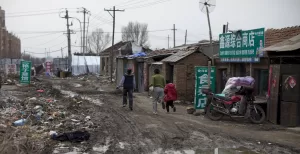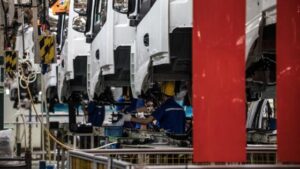According to the UK-based predictive health analytics company Airfinity, as of February 6, 2023, the estimated cumulative deaths from COVID-19 in China since December 1, 2022, have reached 1.3 million. In just over two months, pandemic fatalities in China have surpassed the figure for official deaths in the US since the pandemic began three years ago. The US toll stands at 1.13 million, with close to 500 people dying each day.
Meanwhile, the Chinese Center for Disease Control and Prevention (CDC) continues to insist on adhering to an extremely narrow definition of COVID-19 deaths, releasing figures which are acknowledged to be vast undercounts by every reputable scientific body with their wide experience in the behavior of the coronavirus, including its latest iteration of Omicron.
Reuters noted on February 4, 2023, that Chinese health officials reported that between January 27 and February 2, only 3,278 COVID-related in-hospital deaths had occurred. And among these deaths, only 131 deaths were related to respiratory failures, bringing the cumulative tally since December 8 to 82,238.
Since China officially lifted its Zero-COVID policy on December 7, a tsunami of infections has washed across the country. Government officials called it the exit wave, expressing the hope that the country would emerge from the “dynamic” public health efforts it had mounted to protect the lives and well-being of its population.
It was the unrelenting pressures imposed by global finance capital to bring online its economic engines, and not protests by a mere several hundred university students decrying the infractions on their liberties by the Zero-COVID policy, that were decisive in the about-face.
Given the popularity of the Zero-COVID policy among the Chinese working class, officials sought to assure them that Omicron was truly mild, a lie perpetrated by every other national government that used the highly contagious and deadly strain to carry out a strategy for mass infection and an end to pandemic restrictions.
The new policy in China required a complete cover-up of the real toll in terms of excess deaths that the population was forced to accept in the bureaucracy’s deal with the West. This was exemplified by China’s Vice Premier Liu He’s address to the billionaires at the World Economic Forum in Davos, proclaiming that China was open for business again.
As the Airfinity update noted, the Omicron surge spread with such ferocity that instead of a second wave during and after the Chinese Lunar New Year, the country experienced one enormous wave of infection peaking in mid- to late-January. Accordingly, they revised their estimates of daily deaths up to 36,000 per day at the peak, accounting for the scale of infection and the impact on health systems as they sought to absorb the massive number of severely infected people.
In particular, rural China faced the hardship of both having a much older population and lacking sufficient health care resources—including basic medications like ibuprofen to reduce high fevers being out of stock—to manage the crisis. As one physician, Dong Chunhong, in the rural region of China’s Shaanxi province recounted in the Telegraph, “People came knocking on my door until midnight. I was exhausted. My whole family had a fever. I wasn’t feeling well, but I still had to serve my people.”
Dong added that the tiny village of Gongjiahe that he lives in has 1,136 people. He believes more than half were infected and 90 percent survived, although he imagined many died at home without his knowledge.
Anecdotal stories about loved ones succumbing to the virus have become legion in press reports. Either hospitals are too crowded to accept more patients or resources are lacking at fever clinics to treat patients. Many of the infected end up waiting at home in the hopes of recovering. However, as their health begins to fail and their need for oxygen becomes acute, they are brought back to hospitals and clinics for immediate attention. Not surprisingly, their families are told their loved one passed away from heart disease. As one man examining his wife’s death certificate mused, “I didn’t know she had such a disease.”
A report released in mid-January by Peking University had estimated more than 900 million people (64 percent) in the country had been infected, with numbers expected to rise during the mass internal migration of the Lunar New Year, which will drive the virus deeper across the country. Notably, their estimates had placed the level of infections in some rural and remote provinces at upwards of 80 to 90 percent, corresponding to a level of deaths that remain uncounted.
In a grim report, attempting to contextualize the hidden deaths in China during the exit surge, the New York Times examined the obituaries of scholars and scientists published over the last four years by the Chinese Academy of Engineering and the Chinese Academy of Sciences.
As the report noted, there are about 1,700 members distributed almost equally between the two institutions. Although the obituaries didn’t specify the exact cause of death other than “illness,” there was an appreciable jump in deaths during the surge weeks compared to previous months (during Zero COVID) on the order of more than five-fold higher. In total 40 scholars and scientists—molecular biologists, nuclear physicists, wildlife scientists, etc.—perished in the two months straddling the New Year when previously on average about three died per month.
The Times report added, “The data drawn from the obituaries are far from conclusive … still, obituaries published by other institutions showed similar spikes in late December and early January. From 2019 to 2021, the Harbin Institute of Technology, one of the top engineering schools in the world, had published between one and three obituaries for professors and staff members in those months. Between December and last month, it announced 29 deaths.”
Aside the combined loss of cumulative knowledge and scientific accomplishments that such distinguished institutions produce for the benefit of society, one must acknowledge, given their prestigious positions with potential access to a better standard of health care, that the toll on the working class of China has been even higher during the last few weeks of mass infection.
A brief glimpse into the social media platform Weibo provides context into how the population is reeling from the betrayals by their government leaders in protecting them and their families from the ravages of the infection.
In response to a post on January 16 from Zhejiang province on the death of their grandfather, responses included, “One could really say that your grandfather was murdered by those health care experts who promoted that [Omicron] is a mere cold, that [infections] are all asymptomatic and the Zero COVID should be lifted.” Another wrote, “I was at the hospital a couple of days ago but could not get access to a bed. I had to stay in the emergency room. It was filled with elderly people, and basically every day we had someone pass away … my whole perspective about life was challenged during that couple of days.”
Indeed. As such grievances are being shared by the population, which is going through a shared catastrophic and horrific experience watching family members become sickened or die, in the financial sector there is only jubilance as the shares for Taiwan’s Foxconn, the world’s largest contract electronics maker and a major iPhone assembler for Apple, jumped more than 48 percent year-on-year.
Revenue in January reached a record high of more than $22 billion, according to Reuters. A statement issued by the company notes that operations at the Zhengzhou campus, site of worker protests against unsafe public health conditions, are back to normal. In the cold rhetoric of finance, Foxconn said, “Based on market consensus for first quarter 2023, January revenue came in slightly ahead. The outlook for the first quarter will likely reach market expectation.”
The International Committee of the Fourth International insisted that a Zero-COVID strategy on a national basis would never last. The pandemic was first and foremost an international phenomenon that threatened the life and livelihood of the entire planet.
But for the ruling elites there could be no infringement on their need to extract surplus value off the backs of the working class. Mantras like “the cure can’t be worse than the disease,” “Let it rip,” “Herd immunity,” “COVID is endemic” and “Forever COVID” are all anti-scientific and justify anti-public health policies that place profits above life and normalize death.
Even as estimates indicate that more than 1 million Chinese, mainly workers and peasants, have suddenly perished from a disease that was stoppable and eradicable, the corporate media has moved on, declaring the pandemic is over and giving no serious attention to the enormity of the tragedy.
[Courtesy: World Socialist Web Site (WSWS). The WSWS is the online publication of the International Committee of the Fourth International.]




